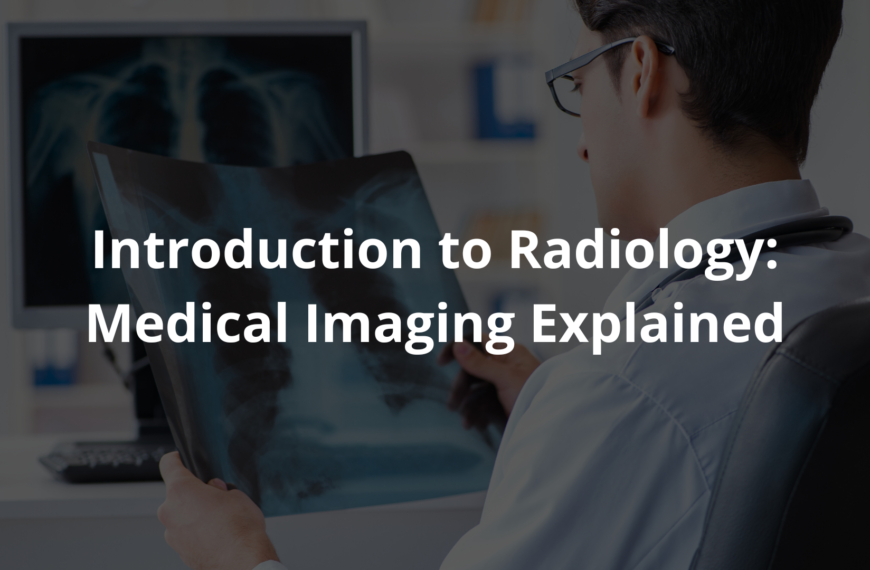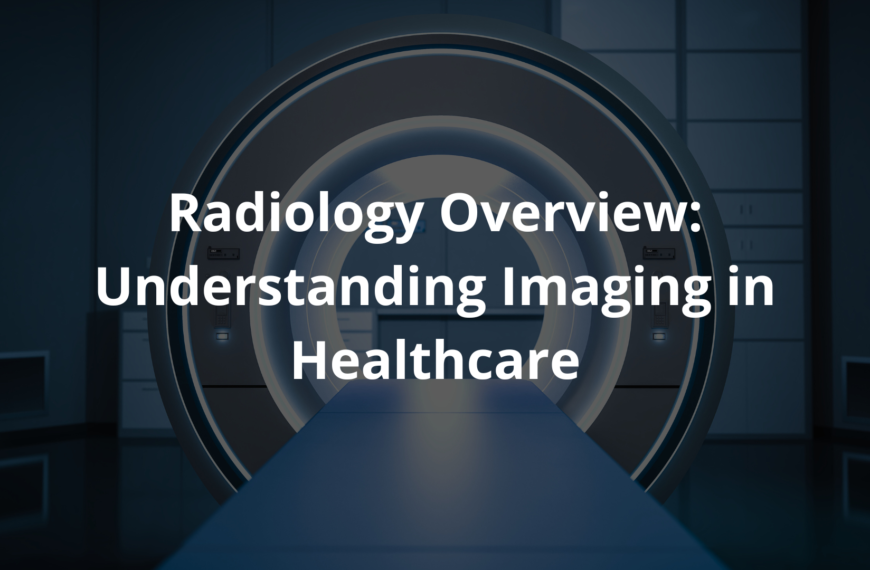Imaging Myths Debunked: Does an MRI hurt? Does it use radiation? Discover the truth to help ease your worries about medical scans.
Medical imaging can seem a bit scary at first, especially with all the myths floating around. One big worry is that MRIs use radiation. Actually, they don’t! MRIs use magnets and radio waves, so you’re safe. Another myth is that MRIs are painful. I thought the same, but it’s just loud and a bit cramped—like a ride at the fair.
Understanding these facts can help ease your mind. So, if you’re feeling worried about a scan, remember the truth about imaging. Keep reading to learn more about other myths and facts about medical imaging that can help you feel relaxed!
Key Takeaway
- MRIs don’t use harmful radiation; they use magnets and sound waves.
- Most imaging tests are painless and quick.
- You can always ask your doctor questions during the imaging process.
MRIs Don’t Use Radiation
A lot of people think MRIs use radiation, but that’s not true! MRIs (Magnetic Resonance Imaging) use strong magnets and radio waves to create detailed pictures of the body(1). Unlike X-rays or CT scans, there’s no radiation involved, which makes them safer for patients.
When I had my first MRI, I was nervous. The machine looked huge, and I’d heard it was noisy. The technician explained the loud sounds came from the magnets, not anything harmful. That helped me relax. The scan took about 30 minutes, and all I had to do was lie still. It felt long, but knowing it was safe made it easier.
MRIs are especially useful for looking at soft tissues like muscles, organs, and the brain. If you’re scheduled for one, don’t worry—it’s a safe, painless procedure. Just magnets and radio waves working together to help doctors see what’s going on inside.
Imaging Tests Are Usually Painless
Some people think imaging tests, like CT scans, hurt. That’s not true! These tests are made to be as easy and comfortable as possible. A CT scan (short for computed tomography) uses X-rays to take detailed pictures of your body. You just lie still on a table, and the machine does the rest. No pain, just a bit of patience(2).
When I had my CT scan, I was nervous. But it turned out fine. The table moved slowly, and I had to hold my breath for a few seconds (that felt a bit funny). The machine made a soft whirring sound, but it wasn’t scary.
Here’s what usually happens:
- You lie on a moving table.
- The scan takes only a few minutes.
- You might hold your breath briefly.
The staff will explain everything and make sure you’re comfortable. So, don’t worry—CT scans are quick, easy, and painless!
Contrast Dye Is Not Always Dangerous

A lot of people get nervous about the contrast dye used in CT scans. They worry it might be harmful. While it’s true that a small number of people can have allergic reactions, this is pretty rare. For most, it’s completely safe and really helpful. The dye makes it easier for doctors to see things like blood vessels, organs, or any unusual changes inside the body.
When I had my CT scan, I was nervous too. I asked my doctor about the dye, and he explained it’s usually injected through a vein (like an IV). He told me it works by making certain areas show up brighter on the scan. He also asked if I had any allergies, which made me feel safer.
If you’re worried, here’s what to remember:
- Tell your doctor about any allergies.
- The dye helps get clearer images.
- Most people don’t have any issues.
Always ask questions—it helps.
Radiation Exposure Is Low
Many people hear “radiation” and worry about medical imaging, but it’s not as scary as it sounds. The radiation levels used are very low and carefully managed. For instance, a chest X-ray exposes you to about 0.1 millisieverts (mSv)—that’s like spending ten days in the sun. A dental X-ray? Even less, around 0.005 mSv, or just one day’s worth of sunlight.
When I first learned this, I was surprised too. I’d always thought X-rays were risky, but knowing the numbers helped me relax. CT scans do use more radiation, but even then, the doses are controlled to be as low as possible while still giving doctors the images they need(3).
If you’re worried, it’s okay to ask your doctor about the risks. They’ll explain why the scan is necessary and how it helps. Remember, these tools are used to keep us healthy, not harm us.
You Can Ask Questions Anytime

Some people feel nervous about asking questions during imaging appointments. They might worry it’ll bother the doctors or technicians, but that’s not true. Healthcare providers actually welcome questions. It helps them understand your concerns and makes you feel more comfortable.
I remember feeling nervous before my MRI. I didn’t know much about the machine, so I asked the technician. I thought she might be too busy, but she was happy to explain. She told me how the MRI worked and how the images would help my doctor. It made the whole experience less scary.
Here’s why asking questions helps:
- You’ll understand the process better (like what the images are for).
- You’ll feel more in control (knowing what’s happening).
- It builds trust with your healthcare team.
So, if you’re unsure, ask. Your questions matter, and they can make the whole experience easier. Don’t hold back!
Moving During Scans Is Okay
A lot of people think they must stay perfectly still for imaging tests, like MRIs or CT scans. While stillness helps get clear pictures, it doesn’t mean the process has to be stressful. Many imaging centres try to make patients feel more comfortable.
For instance, some places play music during the scan, which can help distract you. Others may let you bring a comforting item, like a scarf or a small photo. These little things can make a big difference.
I remember being nervous about my MRI because I’m not great at sitting still. But the technician told me I could ask for a short break if I needed one or even move slightly between images. That reassurance made it so much easier.
If you’re worried, here’s what can help:
- Ask for music.
- Bring a comfort item.
- Request a break if needed.
- Trust the technicians—they’re there to help.
You’ve got this!
Imaging Tests Don’t Take a Long Time
A lot of people think imaging tests take forever, but they really don’t. The time depends on the type of test.
X-rays are the quickest—just a few minutes. You stand or lie down, they position you, and it’s over. CT scans take longer, usually 15 to 60 minutes, depending on what’s being scanned. MRIs? They’re the longest, often around an hour or more.
I remember my first MRI. I thought it’d take hours, but the technician said it’d be about 45 minutes. That made it easier to handle.
Here’s a quick breakdown:
- X-rays: A few minutes.
- CT scans: 15–60 minutes.
- MRIs: Around an hour or more.
If you’re worried about time, just ask. Knowing how long you’ll be there can help you plan your day. Maybe even fit in a coffee or lunch afterward. It’s always better to feel prepared.
MRI Machines Are Safe for Everyone
Sources: Linux.conf.au
Some people feel nervous about getting an MRI if they’re pregnant or have metal implants. It makes sense—MRI machines use strong magnets, and that can interact with metal. But here’s the thing: most modern MRIs are designed to be safe for many people, even those with implants. (Certain implants, like pacemakers, might need extra care.)
I once spoke to a woman who was pregnant and needed an MRI. She was worried, naturally, and asked heaps of questions. The doctor calmly explained everything, making sure she felt comfortable. By the end, she looked much more at ease.
If you’re pregnant, it’s smart to chat with your doctor. They’ll guide you on what’s best for you and your baby.
Quick tips:
- Metal implants? Check with your doctor first.
- Pregnant? Ask about alternatives if needed.
Remember, doctors are there to help. Don’t be afraid to ask questions—they want you safe.
Imaging Tests Help with Accurate Diagnosis
Imaging tests, like MRIs and CT scans, are more than just fancy pictures. They’re tools that help doctors see what’s happening inside your body without needing surgery. I remember when I had a scan done, my doctor explained how it would guide the next steps. That made me feel less worried.
These tests are really useful for things like:
- Finding problems: They show injuries, tumours, or swelling that can’t be seen from the outside.
- Planning treatments: Clear images help doctors pick the best way to treat you.
- Checking progress: Scans let doctors see if treatments are working or if things have changed.
An MRI is great for soft tissues, like muscles or the brain, while a CT scan is better for bones and is usually quicker (sometimes done in 15 minutes).
If you’re nervous, ask your doctor how the test helps. Knowing that can make it less scary.
FAQ
What is a 3T MRI and how does it differ from other MRI scanners?
A 3T MRI is a type of MRI scanner that uses a stronger magnetic field, around 3 tesla, compared to the more common 1.5T MRI. This allows the 3T MRI to produce higher-quality, more detailed images of the body and its soft tissues. The stronger magnetic field can capture finer anatomical details, which may be especially useful for diagnosing conditions in the brain, musculoskeletal system, and other areas.
How is an open MRI different from a closed MRI?
An open MRI scanner has a more spacious and less confined design compared to a traditional closed MRI. This can be more comfortable for patients who may feel claustrophobic in a closed MRI machine. However, open MRIs generally have a lower magnetic field strength, meaning the image quality may not be as detailed as a closed MRI.
What are some common myths about MRI scans and how do they compare to the facts?
Some common myths about MRI scans include that they are painful, expose you to radiation, and are unsafe for pregnant women. In reality, MRI scans are painless, do not use ionising radiation, and are generally considered safe for pregnant women when performed under the guidance of a healthcare provider. MRI scans are an important diagnostic tool that can provide detailed images of the body’s organs and tissues.
How can patients ensure they receive high-quality images and optimal care during an MRI?
To ensure high-quality images and optimal care, patients should select an experienced radiology practice with modern, well-maintained MRI scanners. They should also discuss any concerns or questions with their healthcare team and consider obtaining a second opinion if they have doubts about their diagnosis or treatment plan. Patients can ask about the qualifications and experience of the MRI technologists performing their scan.
What are some key benefits of modern MRI scanning technology?
Modern MRI scanning technology offers many benefits, including the ability to capture highly detailed, high-quality images of the body’s organs and soft tissues. This can lead to more accurate diagnoses and better-informed treatment planning. MRI scans are also generally considered safe, with no exposure to ionising radiation. Advances in scanner design have also improved patient comfort during the procedure.
Conclusion
Imaging tests can make us feel worried. There’s a lot of misinformation out there. MRIs don’t use harmful radiation, and most scans are pretty painless. You can always ask questions during the process to feel more at ease. If you have any concerns about your imaging test, speak up! Your healthcare provider is there to help you feel comfortable and informed. Remember, knowing the truth can help ease your fears. Don’t hesitate to ask!
References
- https://www.health.qld.gov.au/__data/assets/pdf_file/0027/1236195/sw9527.pdf
- https://www.prostate.org.au/testing-and-diagnosis/diagnosis/imaging-tests/
- https://www.racgp.org.au/afp/2013/june/radiation-safety




